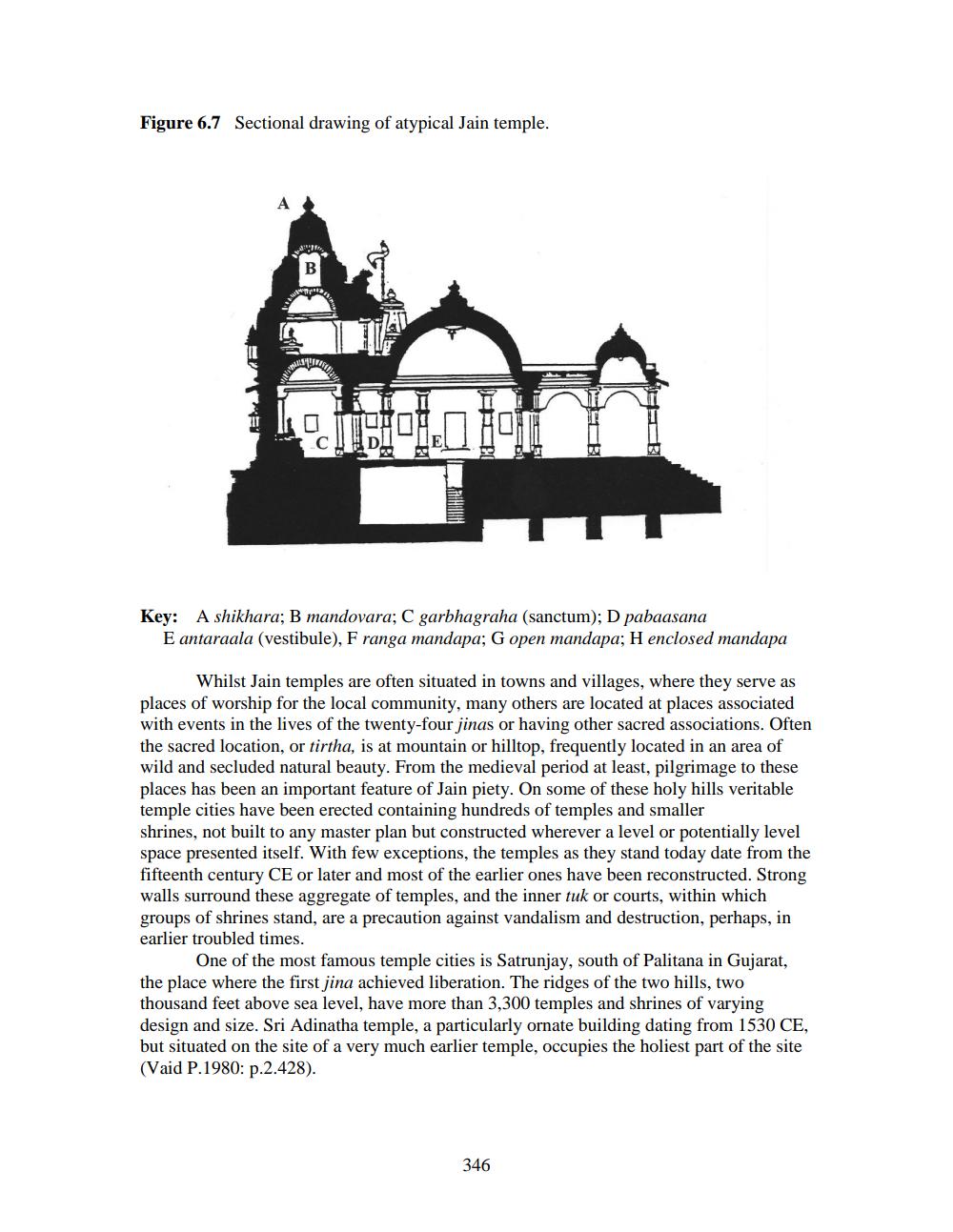________________
Figure 6.7 Sectional drawing of atypical Jain temple.
.be
ED
Key: A shikhara; B mandovara; C garbhagraha (sanctum); D pabaasana
E antaraala (vestibule), F ranga mandapa; G open mandapa; H enclosed mandapa
Whilst Jain temples are often situated in towns and villages, where they serve as places of worship for the local community, many others are located at places associated with events in the lives of the twenty-four jinas or having other sacred associations. Often the sacred location, or tirtha, is at mountain or hilltop, frequently located in an area of wild and secluded natural beauty. From the medieval period at least, pilgrimage to these places has been an important feature of Jain piety. On some of these holy hills veritable temple cities have been erected containing hundreds of temples and smaller shrines, not built to any master plan but constructed wherever a level or potentially level space presented itself. With few exceptions, the temples as they stand today date from the fifteenth century CE or later and most of the earlier ones have been reconstructed. Strong walls surround these aggregate of temples, and the inner tuk or courts, within which groups of shrines stand, are a precaution against vandalism and destruction, perhaps, in earlier troubled times.
One of the most famous temple cities is Satrunjay, south of Palitana in Gujarat, the place where the first jina achieved liberation. The ridges of the two hills, two thousand feet above sea level, have more than 3,300 temples and shrines of varying design and size. Sri Adinatha temple, a particularly ornate building dating from 1530 CE, but situated on the site of a very much earlier temple, occupies the holiest part of the site (Vaid P.1980: p.2.428).
346




